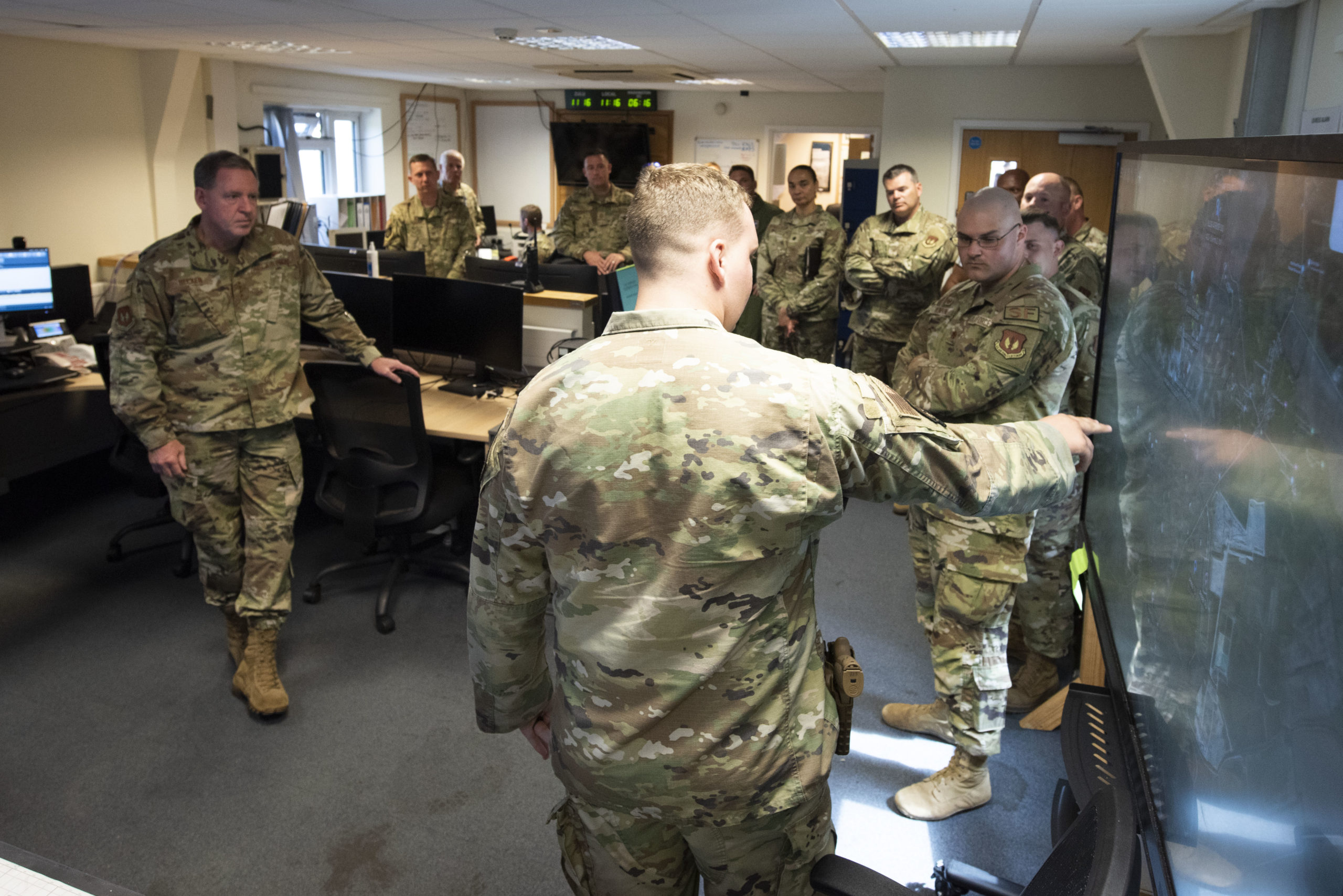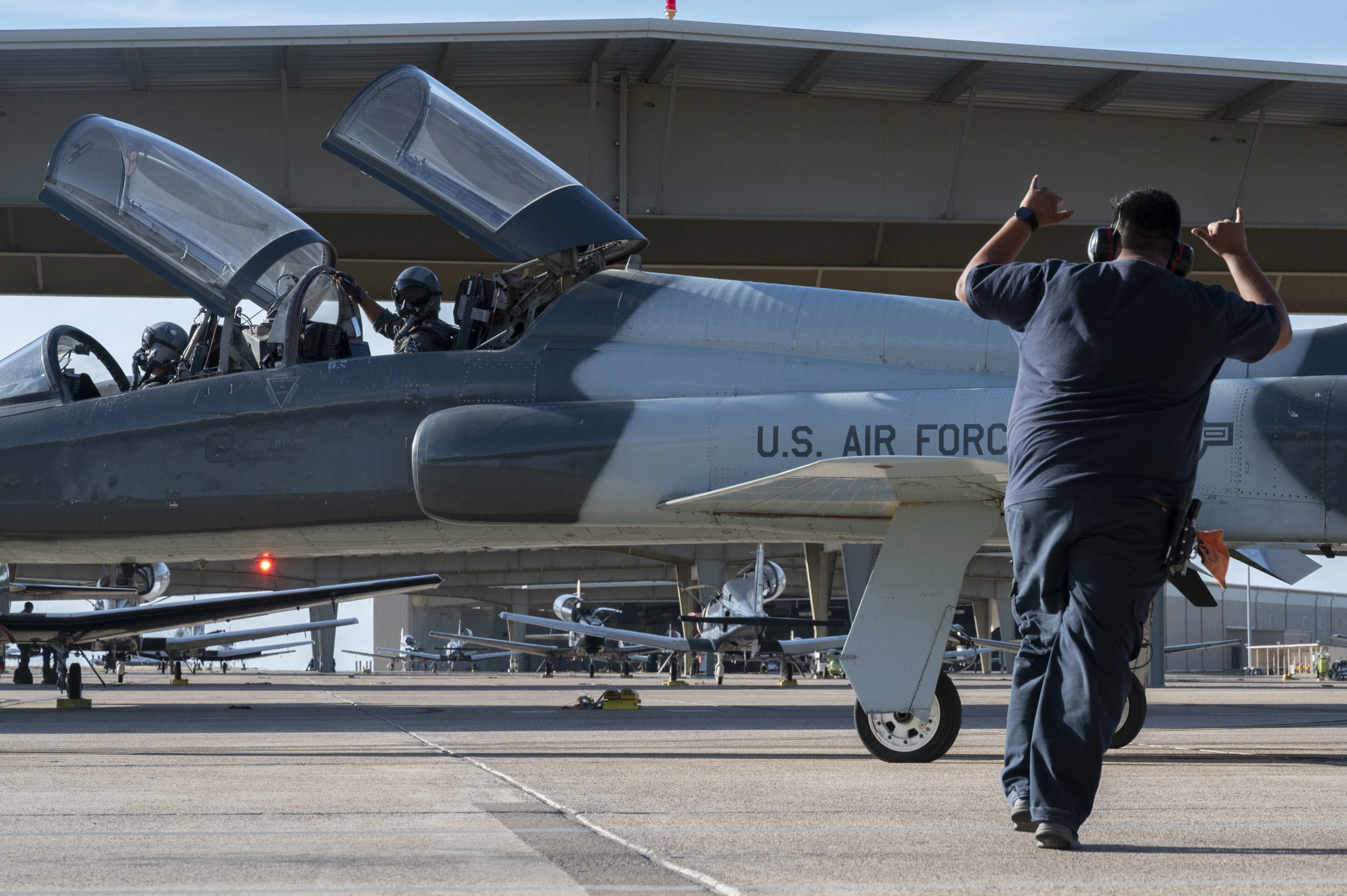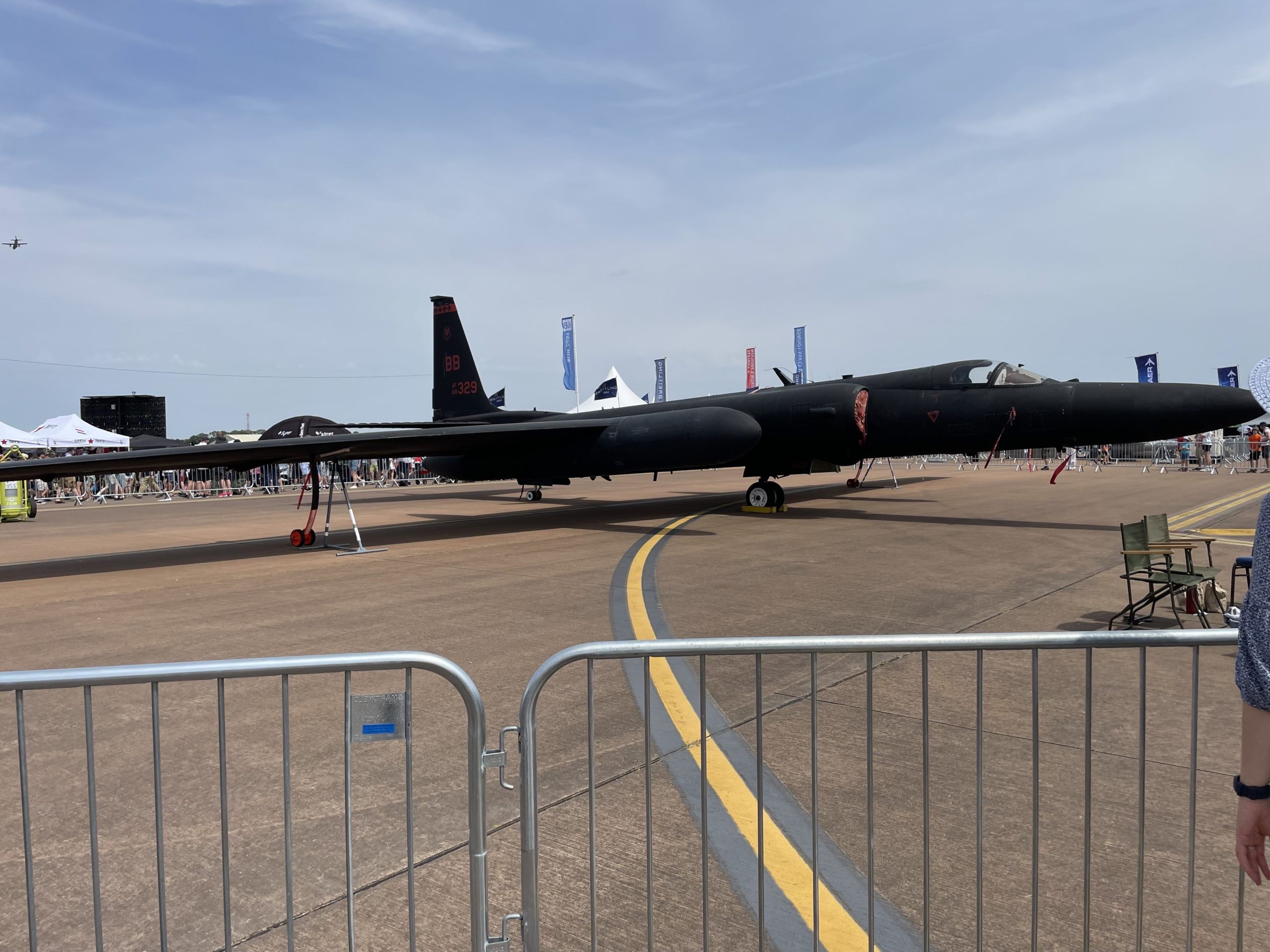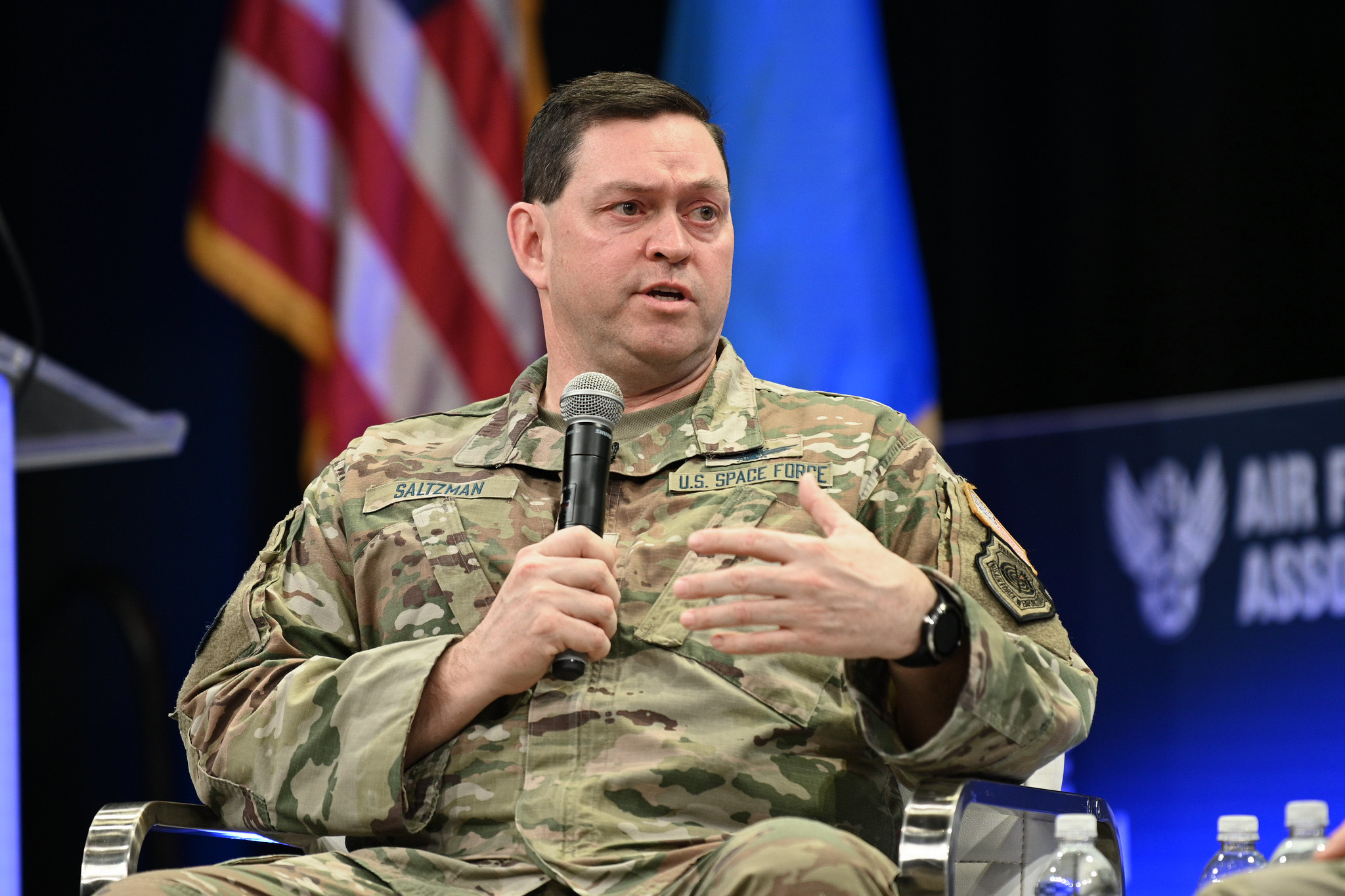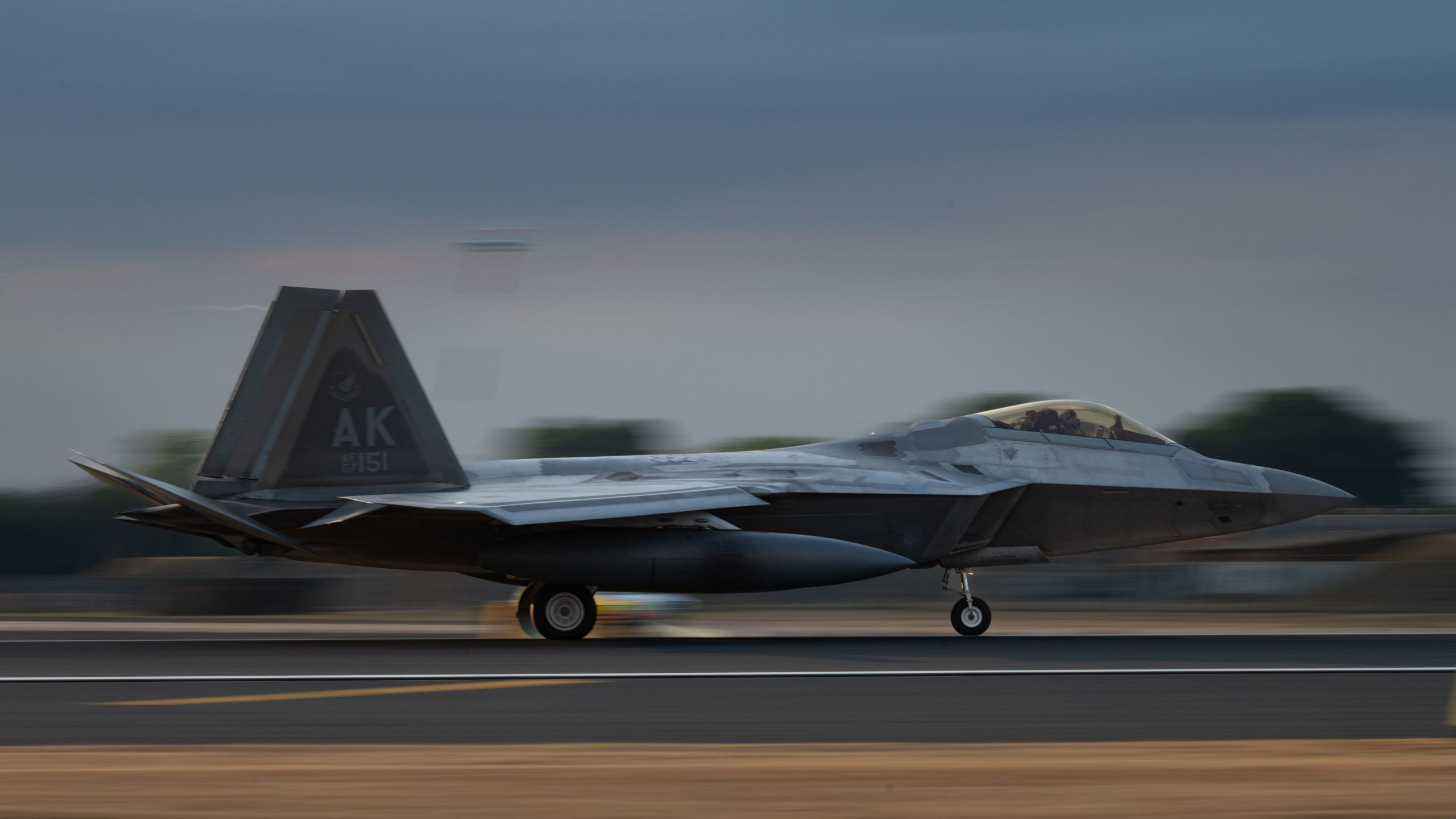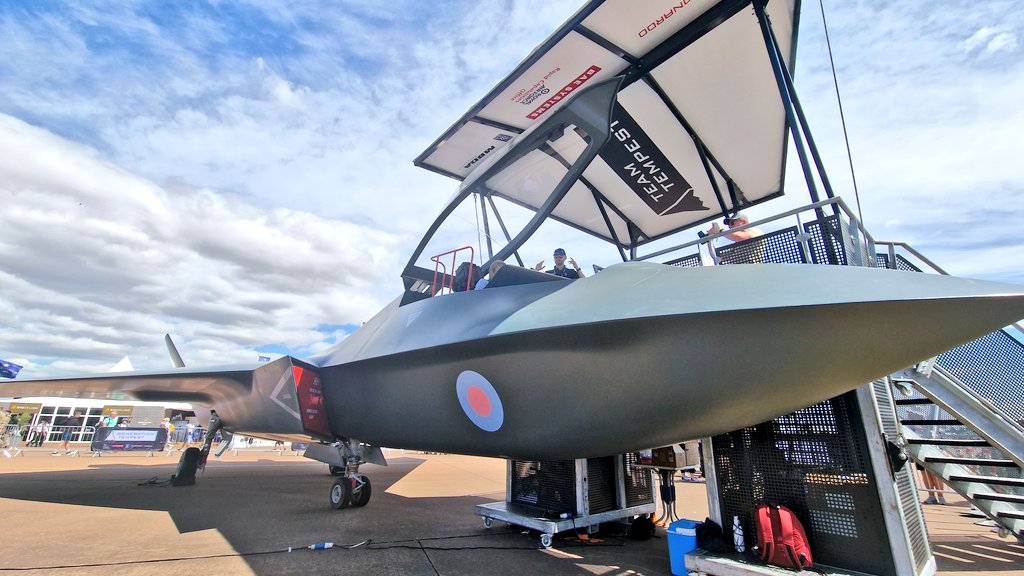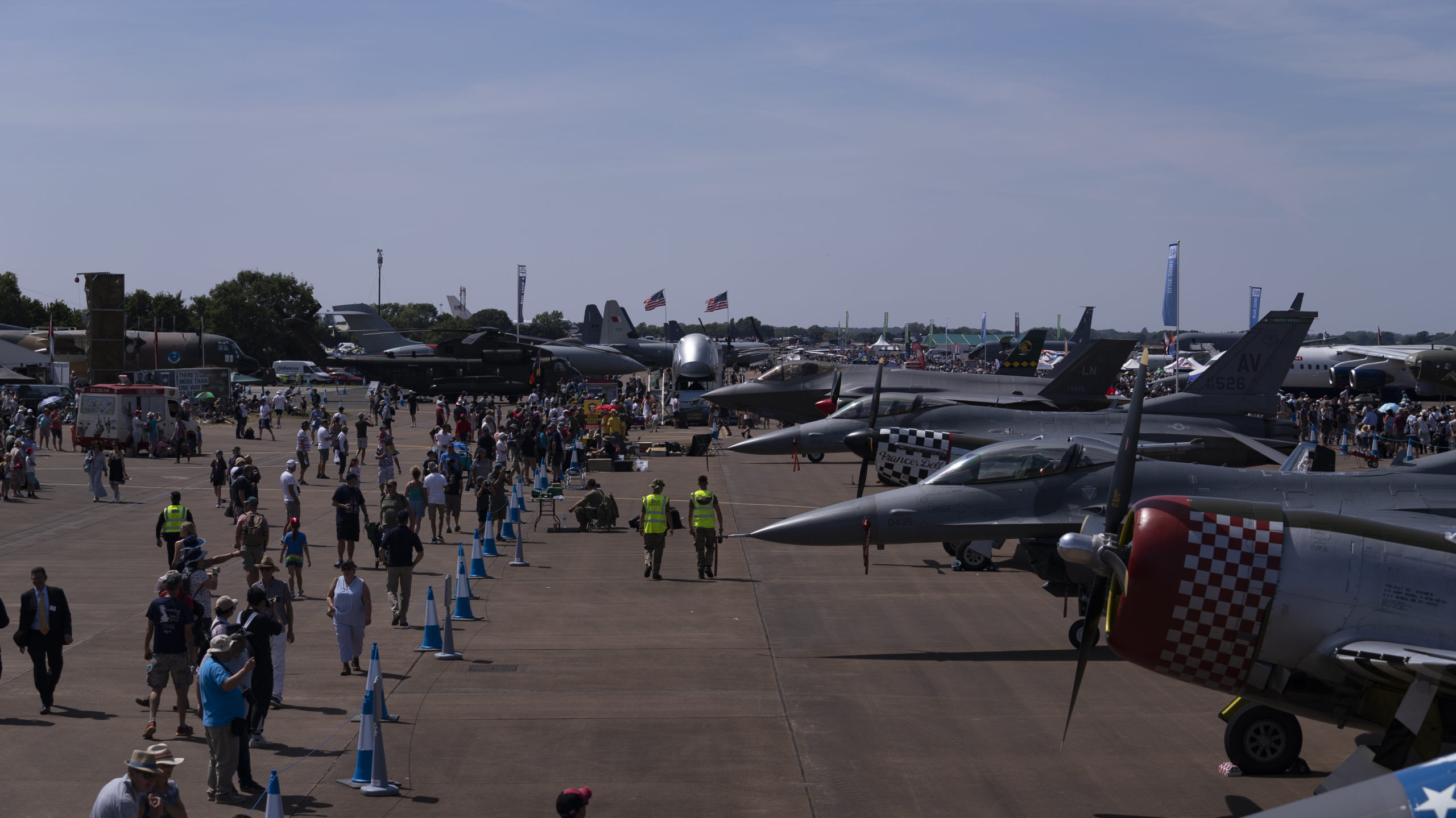RAF FAIRFORD, U.K.—A little more than a decade ago, RAF Fairford was all but abandoned by the U.S. Air Force, with uniformed personnel leaving and the service keeping the small base northwest of London as a designated standby, to be used only in contingencies.
Now, however, the base is in a “growing phase,” its commander says, as U-2s fly nearly every day, bomber task force missions regularly cycle through, and construction projects ramp up.
The 420th Air Base Squadron, led by Lt. Col. Jeremy Stover, is responsible for all the day-to-day functions that keep the base running. For the bomber task forces in particular, that entails months of planning to support hundreds of Airmen and their aircraft.
“Fairford’s in this unique position where we’re … the only bomber forward operating location in Europe,” Stover told Air Force Magazine in an interview. “So what that means is that we’re organized, manned, trained, [and] equipped to support that bomber fleet, both with the necessary specialized ground equipment and the facilities they use, if they need to stand up the mission planning cell or put their maintenance in, because we’re not a main operating base. So we’re kind of postured here, and that really is our mission, to be ready to support the deploying units here.”
Within the past year, there have been two BTFs based out of Fairford—B-1B Lancers from Dyess Air Force Base, Texas, in October, while B-52 Superfortresses from Minot Air Force Base, N.D., were there starting in February. On both occasions, those bombers and their Airmen stayed in Europe for more than a month, conducting missions and training alongside partner nations.
And for the Airmen of the 420nd ABS, those rotations presented an opportunity to flex their own training, Stover said.
“A bomber task force is very much a strategic message in terms of their presence. It helps deter adversaries, assures our allies and partners, and then also allows both my Airmen here who support their mission and the Airmen that are deployed generating, maintaining aircraft, flying the aircraft—it demonstrates their readiness and lethality and shows and allows them to integrate with not just NATO, but other allies and partners,” Stover said.
In particular, the task forces highlighted the “touch points” where his Airmen work alongside those accompanying the bombers, Stover said. While pilots, aircrew, and maintainers accompany their aircraft, they still need support in numerous areas, including “security forces, air traffic control, airfield ops, and [the] communications and force support services section,” Stover said. “So everything that we need to provide for the care and feeding for that number of people from lodging, to fitness centers, morale, welfare, recreation programs, that obviously brings a significantly increased footprint.”
That increased footprint has resulted in Fairford being busier on a day-to-day basis, not only when the bomber task forces are actually on base.
“Previously our airfield did not have published open [operating] hours. We opened the airfield to launch U-2s, and then we would close the airfield and open it back up to recover them. It was only within the last month or so where we established Monday-through-Friday open hours, operating hours [for] the airfield,” Stover said. “So from the airfield perspective, we have airfield management out there, making sure that they identify any degraded pavement surfaces, so that we can forecast ahead of time to make sure the pavement stays in a good enough condition and we maintain it so that we can support that wide range of aircraft.”
The care taken with the runway is of particular importance given Fairford’s status as the European hub for forward-deployed bombers.
“Unique to bombers is they have some of the most, if not the most, strict pavement requirements in terms of condition and load-bearing capabilities. So that is something that we have to stay in front of,” Stover said. “You can’t just send bombers to any runway. A lot of runways aren’t long enough, or they’re not reinforced or not strong enough to be able to take that much weight. So that’s something that they stay current on.”
At the moment, problems with the runway are usually fixed through a contract the base has with the U.K. Ministry of Defence. But that could change in the years ahead, thanks to a new “rapid airfield damage repair program,” Stover said.
“So it’s heavy equipment and the supplies that you would need that are forward staged at strategic locations so that if the runway was damaged, we could rapidly get onto the airfield and repair the airfield so we can continue operations,” Stover said. “So there’s another program there where we will be starting in the next couple of years [which will include] additional warehouses to store some of that equipment.”
Those new warehouses are just a part of a slate of upgrades coming to Fairford to keep pace with the increased footprint and ops tempo. In 2021, the Air Force announced that it will invest some $300 million in improvements to Fairford.
“We are in a time of growth for the base—we’ve got a lot of construction projects on the base,” Stover said.
Already, a new multi-purpose hangar is under construction, with an estimated completion date by the summer of 2023.
Stover said most “hangars on the base right now are very old, and you can’t do some things in those hangars. So this new four-bay hangar, you’ll be able to do engine runs in the hangar. You’ll be able to work on modern aircraft that have special materials and handling requirements and HVAC types of requirements that we don’t have in our current facilities.”
With the new hangar will come an increase in permanent party presence, Stover added—from 12 dating back to when the Air Force first returned to Fairford to around 90 “probably by next summer or the end of next year,” he said.
“Part of that is driven because we brought on additional permanent party military so that we have additional people here, so we do have the ability to have airfield operating hours,” Stover added. “Whereas before we really weren’t manned to be able to do some of that. We’re in a growing phase right now.”
Another project that’s currently underway, Stover added, is one to expand the base’s munitions storage facilities.
“We have very limited … authorized locations on Fairford itself to be able to store munitions, just because we have close proximity to houses off base. So the majority, the vast majority of our weapons are provided by the 420th Munitions Squadron out of RAF Welford, which is 45 minutes southeast of here,” Stover said.
The new facilities will be complete in the next few years and will increase the base’s storage capacity “tenfold,” Stover said.
